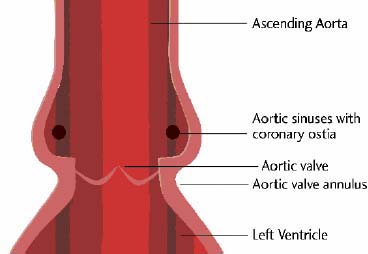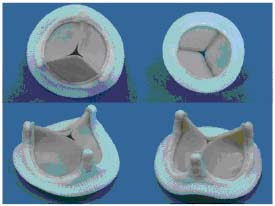Edwards Lifesciences AG v Cook Biotech Inc.
| Jurisdiction | England & Wales |
| Judge | Lord Justice Etherton,Lord Justice Moore-Bick,Lord Justice Jacob |
| Judgment Date | 28 June 2010 |
| Neutral Citation | [2010] EWCA Civ 718 |
| Docket Number | HC08C00934 |
| Court | Court of Appeal (Civil Division) |
| Date | 28 June 2010 |
[2010] EWCA Civ 718
IN THE HIGH COURT OF JUSTICE
COURT OF APPEAL (CIVIL DIVISION)
ON APPEAL FROM THE CHANCERY DIVISION
Mr Justice Kitchin
Before: Lord Justice Jacob
Lord Justice Moore-Bick
and
Lord Justice Etherton
HC08C00934
Case No: A3/2009/1403
Mr Simon Thorley QC and Mr Adrian Speck (instructed by Marks & Clerk Solicitors LLP) for the Appellant
Mr Roger Wyand QC and Mr Piers Acland QC (instructed by Bird & Bird LLP) for the Respondent
Hearing date : 9 th June 2010
Introduction
This appeal concerns the validity of European Patent (UK) 1 255 510 (“the Patent”), which was filed on 31 January 2001. The Patent is called “stent” valves”, and is for an artificial heart valve within a radially expandable stent which can be delivered through a catheter. The appellant, Cook Biotech Incorporated (“Cook”), is the proprietor of the Patent. The respondent, Edwards Lifesciences AG (“Edwards”), brought these proceedings for revocation, and Cook counterclaimed for infringement. By order dated 12 June 2009 Mr Justice Kitchin revoked the Patent. This is the appeal by Cook from that order.
The Judge held that the Patent was invalid for obviousness in the light of US Patent 5,411,552 published on 2 May 1995 (“Andersen”) and was not infringed. In the course of his judgment, the Judge had to resolve a dispute over the priority date enjoyed by the Patent, if valid, because that had a bearing on what Edwards contended was relevant prior art other than Andersen. That issue turned on, among other things, the provisions of section 5 of the Patents Act 1997 and the Paris Convention. Cook's appeal is in respect of the various matters of law on which the Judge decided against Cook—on construction of the Patent, on obviousness and infringement, and on the priority date of the Patent—and also in respect of findings of fact by the Judge in relation to claims 15 and 22 of the Patent. Edwards has filed a Respondent's Notice seeking to uphold the Judge's findings on additional grounds.
The appeal was listed for a 3 day hearing. At the outset of the hearing, it was agreed by the parties that the most efficient way forward was for the Court first to hear the appeal on the Judge's conclusion that the claims of the Patent were obvious over Andersen, including the attack on his findings of fact in relation to claims 15 and 22, since, if those parts of the appeal failed, all the other aspects of the appeal would fall away. In the event, having heard succinct oral arguments and having had the benefit of reading the excellent skeleton arguments of both sides, the Court was of the clear view that the Judge's findings of fact on claims 15 and 22 could not be impugned and his decision on obviousness was correct, and so the appeal should be dismissed. The Court informed the parties immediately of its conclusion and that reasons would be given in reserved judgments. It was not necessary, therefore, to hear submissions on the other matters raised on the appeal, and we did not do so. In this judgment, I set out my reasons for dismissal of the appeal.
The background
In paragraphs [17] to [41] of his thorough and lucid judgment, the Judge set out the common general knowledge at the time of the Patent. Neither side criticises what he says. There is no need to set it all out here. What is of particular relevance in the case is the aortic valve. Its place within the heart is shown in the following diagram.

The following is an enlarged section of the aortic valve.

The Judge described the location and functioning of the aortic valve as follows:
“22 … [T]he aortic valve sits in the aortic valve annulus, a fibrous ring at the junction between the left ventricle and the aorta immediately below the sinuses. The aortic valve itself has three leaflets (or cusps) which are half moon shaped. As mentioned, when the left ventricle contracts, the pressure inside the ventricle increases until it is greater than in the aorta, at which point the aortic valve opens. When the ventricular contraction ends, pressure in the left ventricle rapidly drops. When it falls below the pressure in the aorta, the leaflets of the aortic valve collapse and come together along their edges (commissures) and flow of blood from the aorta back to the heart is prevented. Sitting within the aortic sinuses and within a few millimetres of the leaflets are the coronary ostia, which are openings that lead to the coronary arteries. It is crucial that these are not blocked when a valve is replaced because the coronary arteries provide the heart muscle with blood.”
In paragraphs [24] to [31] of his judgment the Judge described the replacement of diseased heart valves by surgery. He said as follows.
“24. Surgeons have been replacing diseased or malfunctioning heart valves for over 40 years. They have used for this purpose a range of prosthetic valves, both mechanical and biological.
25. Mechanical replacement heart valves are generally made from a combination of metal, carbon and plastic and typically provide a valve function through a tilting disc or a ball moving within a cage. They have a long life span but patients suffer an increased risk of thrombus formation which requires them to undergo life-long anticoagulation therapy.
26. Biologically derived (bioprosthetic) valves attempt to replicate more closely the structure and dynamics of a physiological heart valve. They are made of tissue, generally mounted on a textile cuff or metallic or plastic frame and fall into three categories: homograft (human whole valves), xenograft (animal whole valves) and fabricated (valves tailored from animal pericardium, the tissue that covers the outside of the heart). The latter two categories are those of most importance in the context of the present case.
27. Xenograft valves are normally of porcine origin, but can also be of equine or bovine origin. The valve is physically removed from the animal and treated chemically in order to make the biological tissue immunologically inert and sterile and to improve its mechanical properties. It is then attached to a textile cuff allowing it to be sutured to the heart tissue or mounted on a frame which provides some mechanical support. Such a frame is usually referred to as a stent. In 2000, a well established bioprosthetic valve using a porcine valve was called the “Hancock”. In this device the valve is fixed to a non-collapsible stent covered with fabric, allowing it to be sutured into the patient around its circumference. The valve has three leaflets which, when the valve is closed, meet at their free margins, that is to say the edges which are free to move from the centre of the valve towards the circumference of the valve when opening and free to return to the centre when closing. The line at which any two of these free edges meet is referred to as the commissure or line of coaption.
28. In the case of fabricated valves, leaflets, normally three in number, are fashioned from a sheet of pericardium and again attached to a frame and sewing cuff. In 2000, one of the most successful fabricated bioprosthetic heart valves was the “Carpentier-Edwards pericardial aortic prosthesis”, also known as the “Perimount”. It was implanted as early as 1980 in France and approved for use in the US in 1991. It looks like this:

29. Like the Hancock, the Perimount comprises a non-collapsible stent, covered with fabric, which provides a means to suture it into the patient. The stent has three projecting portions known as commissural posts to which the leaflets are connected at the periphery of their commissures. The leaflets are also sutured to the fabric covered stent along the entirety of the inflow side of the valve (the margin of attachment) to preserve the valvular mechanism geometry and ensure the valve does not leak peripherally.
30. Pericardium is the only natural tissue that has ever been used commercially to fabricate a bioprosthetic valve. Its advantages are numerous. It is available in relatively large quantities, permits the production of leaflets that have uniform thickness, strength and flexibility, can be cut to any desired size and, after suitable chemical treatment, possesses physical properties that closely resemble those of the leaflets of human valves. Moreover, pericardium is biocompatible and exhibits low thrombogenicity. For all these reasons, for many years before 2000, pericardium was the only tissue used for the production of commercialised fabricated bioprosthetic valves. However, such valves do suffer from the drawback that they have a tendency to denature or calcify, which affects their long term performance.
31. As Professor Williams [Cook's bioengineering expert] explained, by 2000, attempts had been made to develop a surgically implantable polymer leaflet heart valve which was seen as having the potential to avoid the difficulties of thrombosis caused by the mechanical valves and calcification which tends to occur with bioprosthetic valves. However, no commercial polymer leaflet surgical valves existed at that time.”
In paragraphs [32] to [41] of his judgment the Judge described as follows the role of “interventional cardiology”.
“32. Surgical heart valve replacement involves a major operation and is not suitable for all patients. However, from the 1960s a new branch of medicine emerged known as interventional cardiology. This is the practice of percutaneously...
To continue reading
Request your trial- KCI Licensing Inc. and iothers v Smith & Nephew Plc and Others
-
MM and SA (Pankina: Near-Miss) Pakistan
...of State] to have my decision reviewed. 4. I am fortified in my view of the matter by the decision in SSHD v Pankina and Others [2010] EWCA Civ 718 in which at paragraphs 37 & 38 under the heading ‘The date at which the facts are to be tested’ Lord Justice Sedley states that – in that case ......
-
Upper Tribunal (Immigration and asylum chamber), 2010-12-20, [2010] UKUT 481 (IAC) (MM and SA (Pankina:near miss))
...of State] to have my decision reviewed. 4. I am fortified in my view of the matter by the decision in SSHD v Pankina and Others [2010] EWCA Civ 718 in which at paragraphs 37 & 38 under the heading ‘The date at which the facts are to be tested’ Lord Justice Sedley states that – in that case ......
-
R Abdullah Bashir Ahmed v Secretary of State for The Home Department
...system — confirmation of acceptance for studies — lawfulness of refusal decision based on requirements in policy guidance —PankinaUNK[2010] EWCA Civ 718 considered In October 2006 the Claimant, a citizen of Pakistan, was granted leave to enter as a student until 31 October 2009. Before that......

